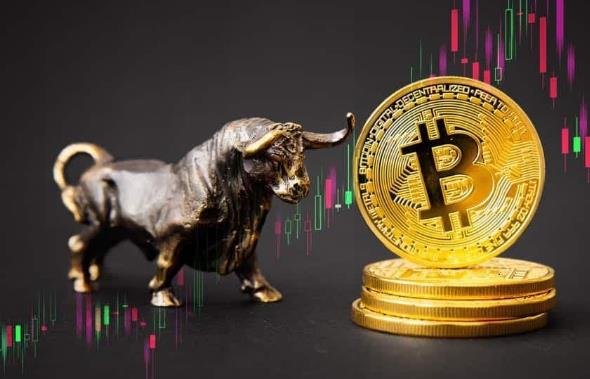Matrixport, a crypto services provider, has developed a proprietary index that measures investor sentiment and market trends for bitcoin (BTC). The index is called the Bitcoin Greed and Fear Index (GFI), and it ranges from 0% to 100%, with higher values indicating greed or excess optimism, and lower values indicating fear or pessimism.
The GFI is based on a combination of factors, such as price volatility, trading volume, social media activity, and market dominance. The GFI aims to capture the overriding market emotions that drive the price movements of bitcoin. The GFI also tries to identify potential trend reversals, as extreme levels of greed or fear often signal market tops or bottoms.

Matrixport’s index suggests a bull revival in bitcoin
According to Matrixport’s GFI, bitcoin may be poised for a rally in the near future. The GFI has recently turned higher from 30% to 60%, bottoming out of July’s slide from above 90%. This indicates that investor sentiment has improved and that the market is recovering from the recent sell-off.
The GFI has a solid track record of marking trend changes in the bitcoin market. For instance, the GFI reached above 90% in April 2021, when bitcoin hit an all-time high of $64,895. It then fell below 10% in May 2021, when bitcoin plunged to $30,000. It then rose above 90% again in June 2021, when bitcoin rebounded to $40,000. It then dropped below 30% in July 2021, when bitcoin dipped to $29,300.
According to Markus Thielen, head of research and strategy at Matrixport, the GFI is tactically bullish and bitcoin prices could resume the uptrend. He said in a note to clients on Thursday: “Index appears to have bottomed out as the daily signal (grey) is projecting upside pressure. After four weeks of consolidation, this indicator is tactically bullish and Bitcoin prices could resume the uptrend.”
Bitcoin faces some challenges and opportunities ahead
However, bitcoin still faces some challenges and opportunities ahead that could affect its price performance. Some of the factors that could influence bitcoin are:
- Regulatory developments: Bitcoin could face more regulatory scrutiny and uncertainty from various governments and authorities around the world. For example, the US Securities and Exchange Commission (SEC) has recently delayed its decision on several bitcoin exchange-traded fund (ETF) applications. The SEC has also warned investors about the risks of investing in crypto products. On the other hand, some countries have adopted more favorable or supportive policies for bitcoin. For example, El Salvador has recently passed a law to make bitcoin legal tender. Other countries, such as Paraguay and Panama, have also expressed interest in adopting similar legislation.
- Technical factors: Bitcoin could also face some technical factors that could affect its supply and demand dynamics. For example, the network difficulty, which measures how hard it is to mine new bitcoins, has recently adjusted upward by 7.3%, after four consecutive downward adjustments. This means that mining has become more competitive and profitable, as more miners have joined or returned to the network. This could also increase the security and stability of the network. On the other hand, some analysts have pointed out that bitcoin is facing strong resistance at $40,000-$42,000, which could limit its upside potential.
- Market sentiment: Bitcoin could also be influenced by the overall market sentiment and risk appetite of investors. For example, bitcoin could benefit from a weaker US dollar or lower bond yields, which could increase its appeal as an alternative asset or hedge against inflation. Bitcoin could also benefit from positive news or events in the crypto space, such as new product launches or partnerships. On the other hand, bitcoin could suffer from a stronger US dollar or higher bond yields, which could reduce its attractiveness or increase its opportunity cost. Bitcoin could also suffer from negative news or events in the crypto space, such as hacks or scams.
